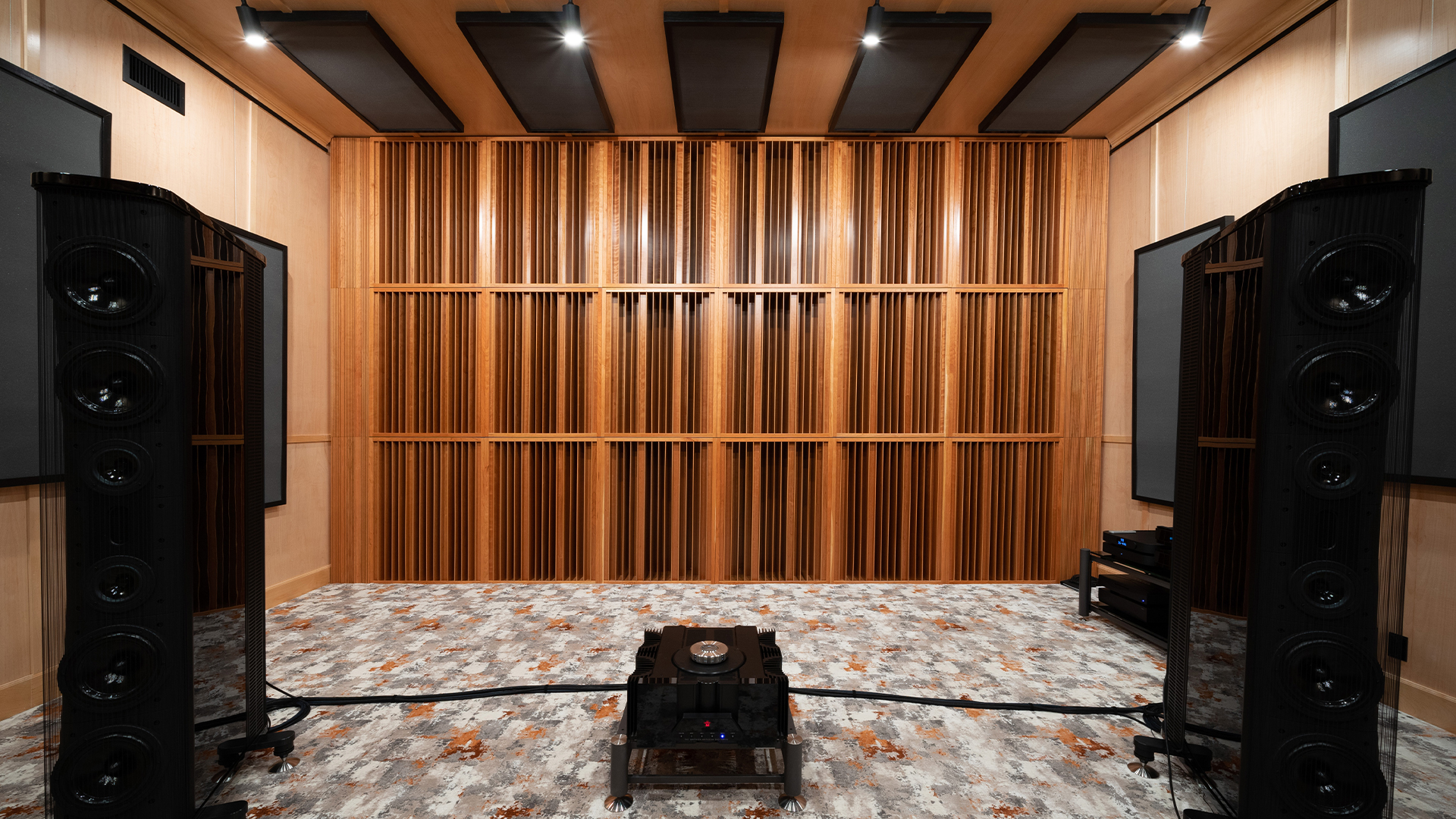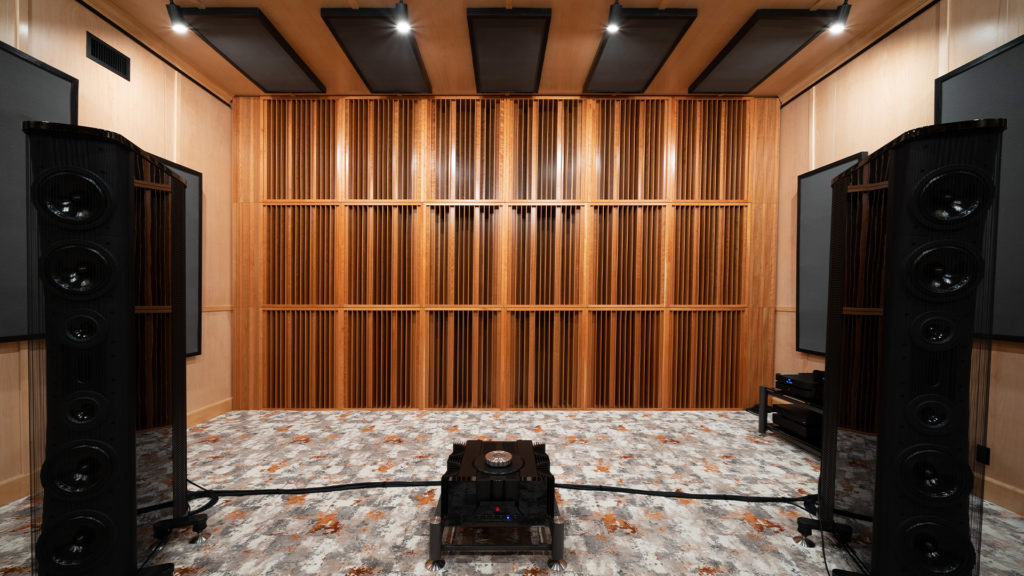
The search term room treatment can have many meanings. Room treatment comes in two main parts. It comes in absorption technology along with diffusion technology. Room treatment that is absorption oriented will have two main parts. We will have low frequency as one category. We will have another category that is for middle and high frequencies. Low frequency absorption room treatment is for bass notes. Middle and high frequency absorption is for voice and music.
Diffusion is another room treatment that focuses on middle and high frequencies of energy within our room. Diffusion is a technology that makes a small room sound larger through a complex psycho acoustical process of managing reflections from our room walls. A diffuser takes the reflections that would strike the walls and spreads them out in a series of much smaller reflections. At Acoustic Fields, we manufacture many diffuser types with different frequency responses.
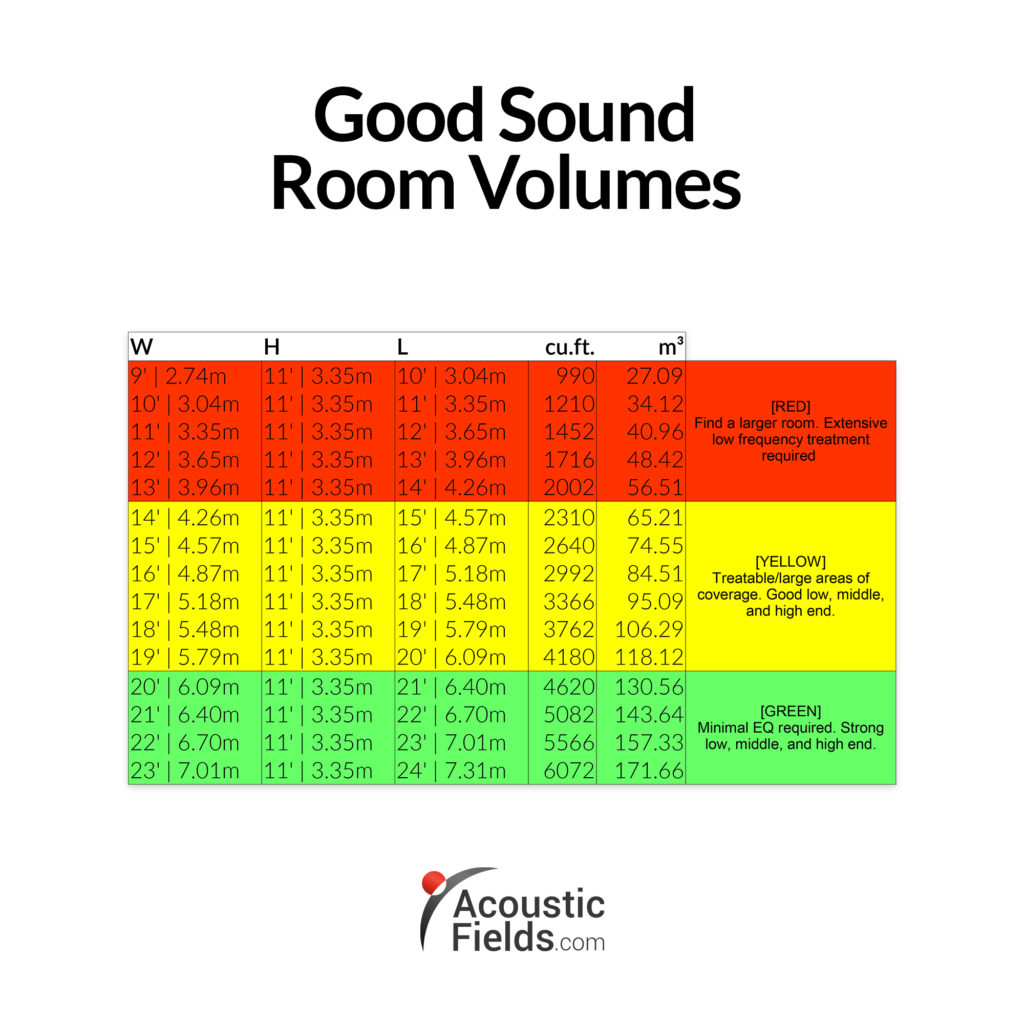
Absorption and Diffusion Room Treatments
When considering any type of room treatment whether it is absorption or diffusion, you must first consider the room dimensions. You must choose a width, height, and length that all work together to minimize the low frequency modal issues along with providing enough distance between wall surfaces to allow for proper time signature management of those reflections. We can use either absorption or diffusion to manage reflections.
The choice depends on the room dimensions and the chosen usage within the room. The size of your room must match what you are going to do within it that involves sound energy for music and voice. The dimensions chosen must minimize lower frequency room modes that can exaggerate or attenuate certain octave bands. The dimensions chosen must all work together from a room treatment standpoint so that when room treatment is introduced the room treatment will perform better.
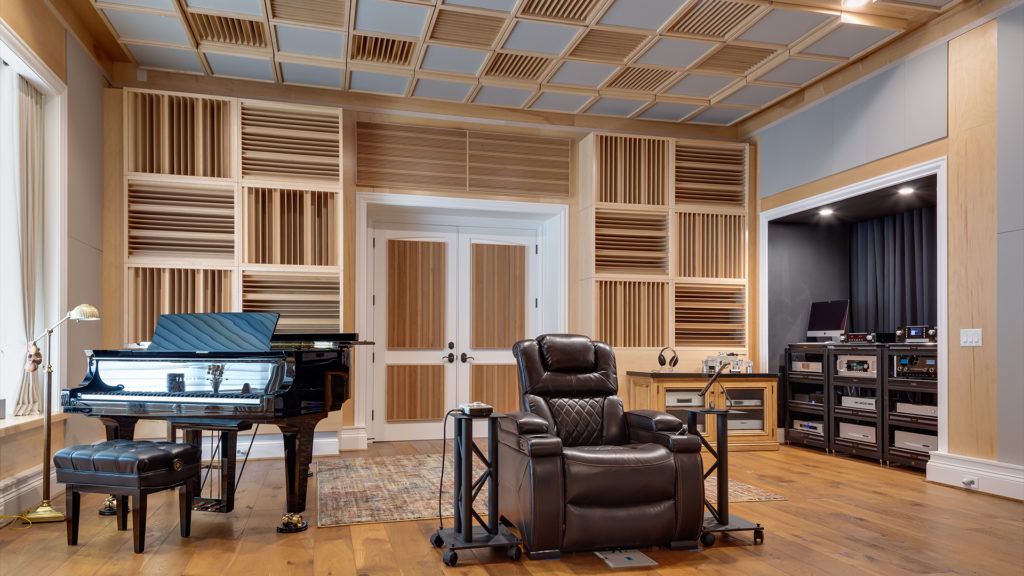
Noise Transmission – What You Need To Know
Once the room size has been calculated to match the room usage, we can then focus on and noise transmission issues. Noise is unwanted energy that leaves or enters the room. It is noise that leaves the room and bothers others. The flip side of that is noise that comes into the room from others and disrupts the usage. Noise transmission must be addressed after the room size has been chosen. If you have the right dimensions to match your usage and you have noise issues, you will not be able to use the room when the noise levels are too high for your usage.
Noise is expensive to treat that is why you must measure your noise issues. You must measure the noise in the room and the noise that is coming from outside the room. The barrier you build is dependent on the frequency and amplitude of your measured noise. All noise is different and all barrier designs are different. There is no one size fits all.
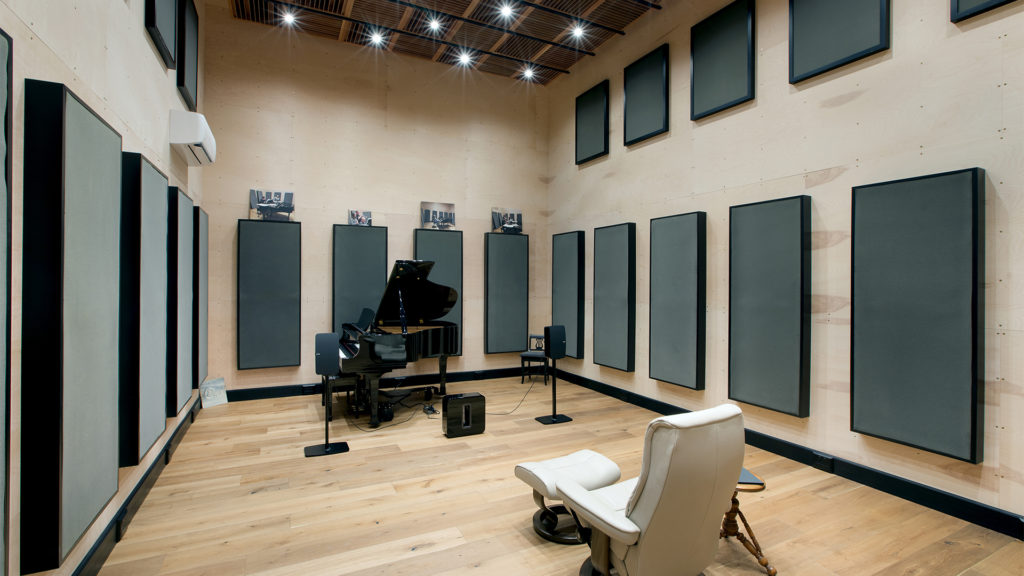
The Three Sound Fields Of Your Room
There are three sound fields within a small room. We have floor to ceiling, sidewall to sidewall, and front to rear. Most small rooms require low frequency sound absorption on the four walls. Some will require low frequency management on the floor or ceiling or in some cases both the floor and ceiling will need to be treated. Low frequency management treatment must be the first treatment consideration for any small room.
The fundamental low frequency issues if unmanaged will produce mid range harmonic distortions. The fundamentals and harmonics are one large family. You must manage the low frequency unwanted pressure issues produced by the bass guitar and the drums. If you can smooth out the lower frequency energy peaks below 100 hz. it will be much easier to treat the middle range frequencies where vocals lie.
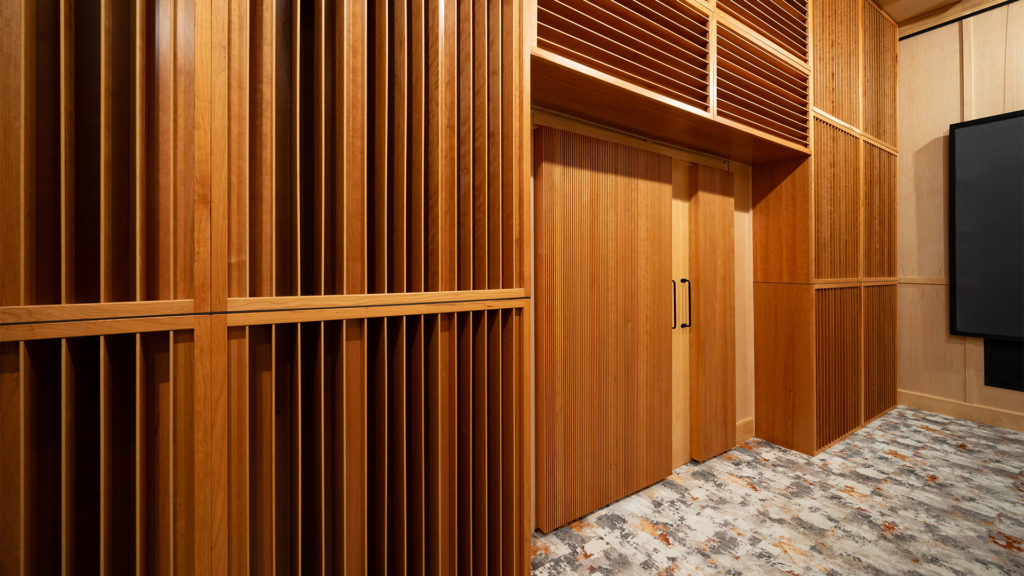
Type, Amount And Position for your intended Usage
Designing and building a critical listening environment is a process. We must first match the size of the room to the room usage. A live drum room is dramatically different from a vocal room. Both are musical usages but that usage operates at different frequencies and different strengths or amplitudes. We must use lower frequency sound absorption room treatment on most wall surfaces to treat unwanted low frequency pressure issues.
We must have technology that has the proper rate and level of absorption to get enough energy absorbed. We must use enough of it to make an audible difference. in what we hear. Middle and high frequency absorption technology must have smooth rates and levels of absorption especially in the 125 – 500 hz. range where the foundation of the human voice lies. Once all of the pressure and reflection issues have been properly managed, we then turn to absorption to make the room sound larger.
Read more about our Home Theater Design services here.


